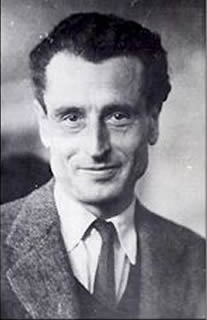Emmanuel d'Astier de La Vigerie facts for kids
Emmanuel d'Astier de La Vigerie (born January 6, 1900 – died June 12, 1969) was a French journalist, politician, and a brave member of the French Resistance during World War II. He played a key role in fighting against the German occupation of France.
Contents
Early Life and Career
Emmanuel d'Astier was born in Paris. He studied at the Naval Academy and served in the French Navy. However, he left the Navy in 1923. After that, he became a journalist and a poet. He wrote for a newspaper called Action Française. Later, he changed his political views and moved towards the Left after seeing the events of the Spanish Civil War (1936–1939).
When World War II began, d'Astier rejoined the French Navy. He became the head of naval intelligence, gathering important information. But after France was defeated and the Vichy France government was set up, he was dismissed from his job because of his political beliefs.
Joining the Resistance
After being dismissed, Emmanuel d'Astier decided to fight back. In Clermont-Ferrand, he started a Resistance group called La Dernière Colonne. This group later became known as Libération-sud. He worked with other important Resistance figures like Raymond Aubrac, Lucie Aubrac, and Jean Cavaillès.
Early Actions of Libération-sud
In 1941, d'Astier's group carried out two important sabotage attacks. They damaged train stations in Perpignan and Cannes. In February, they also printed and shared 10,000 flyers to spread their message against the occupation. However, one person distributing the flyers was caught, which led to the arrest of d'Astier's niece and uncle. Because of this, the group decided to pause their activities for a short time.
Starting the Underground Newspaper Libération
After a few months, the group started a new project: an underground newspaper called Libération. They got help from local newspaper printers and trade unionists who supplied paper. The first edition of Libération was printed in July 1941, with 10,000 copies distributed secretly. This newspaper helped to spread information and hope among the French people.
Unifying the Resistance
In 1942, d'Astier met with Jean Moulin, another very important leader of the Resistance. They talked about bringing all the different Resistance groups together. Eventually, many groups joined forces to form the Conseil National de la Résistance (CNR), which means the National Council of Resistance. This was a big step in making the Resistance stronger and more organized.
In 1943, d'Astier traveled to Algiers and met Charles de Gaulle. De Gaulle was the leader of the Free French Forces, a government-in-exile fighting from outside France. D'Astier joined de Gaulle's government as a Commissioner to the Interior, helping to plan the future of France.
Writing "The Partisan"
While in London in 1943, Emmanuel d'Astier wrote the words for a famous song called "La Complainte du partisan". Anna Marly wrote the music for it. This song became known in English as "The Partisan" and was recorded by many famous singers, including Leonard Cohen and Joan Baez. It became a powerful song about fighting for freedom.
After the War
After France was liberated from occupation, d'Astier became the Minister of Interior in the new government. He continued to publish his newspaper Libération and wrote books about his experiences during the war.
He also continued his political career, working with the French Communist Party for a while. He won a seat in the National Assembly in 1946. He later helped start a group called the Union progressiste. In 1958, he received the Lenin Peace Prize, an award for promoting peace.
However, he later disagreed with the Soviet Union's leaders after they stopped the Hungarian uprising. Because of this, he ended his ties with the communists.
Family Life
Emmanuel d'Astier's brother, Henri d'Astier de la Vigerie, also took part in the Résistance, even though his early political views were very different.
Emmanuel d'Astier died in Paris in 1969. His wife, Liubov, was the daughter of a famous Bolshevik named Leonid Krasin. They had three sons: Jean-François, Christophe, and Jérôme. Their family friend, Joan Baez, even wrote a song called "Luba the Baroness" about learning of the death of their oldest son, Jean-François.
See also
 In Spanish: Emmanuel d'Astier de la Vigerie para niños
In Spanish: Emmanuel d'Astier de la Vigerie para niños


